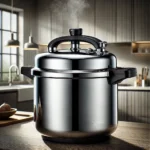Are you looking to understand the difference between 3rd generation and 4th generation loss insurance? What about renewal premiums and cycles? Learn all you need to know about real-loss insurance renewal, types, and rates in this comprehensive guide.
In the world of insurance, renewal processes, premiums, and types can sometimes be confusing, especially with the evolving landscape of loss insurance. Whether you’re renewing a 3rd-generation policy or transitioning to a 4th-generation insurance plan, understanding how real-loss insurance renewal works can help you make more informed decisions about your coverage. This article will break down the key concepts surrounding loss insurance, how the different generations differ, and what you need to know about renewal cycles and rates.
1. 3rd Generation Loss Insurance Renewal
The term “3rd generation loss insurance” refers to the policies that have evolved from the first two generations, offering more comprehensive coverage with updated terms. The 3rd generation is particularly designed to offer more flexibility, which is important as the needs of policyholders have changed over the years.
Key Aspects of 3rd Generation Loss Insurance:
-
Broader Coverage It includes more specific types of losses that previous generations didn’t cover, such as additional property or business losses.
-
Flexible Terms Insurers have adjusted terms to meet customer needs for faster claims processes and better response times in case of claims.
-
Comprehensive Risk Assessment 3rd-generation policies take into account modern-day risks that weren’t considered in older policies.
For those renewing their 3rd-generation loss insurance, it’s important to review the changes in policy terms and ensure that your coverage is updated in line with your current circumstances. Many insurance companies now offer more tailored packages, including optional add-ons for even more comprehensive protection.
Example Case Study John renewed his 3rd-generation home loss insurance policy and found that his coverage now included protection against newer types of damages such as water leakages from faulty pipes, something his previous policy didn’t cover.
👉 Learn more about insurance renewal rates 👈
2. 3rd and 4th Generation Loss Insurance: What’s the Difference?
As the insurance industry progresses, there are notable differences between 3rd and 4th-generation loss insurance. Both types have their strengths, but understanding how they differ will allow you to choose the right option for your needs.
Key Differences Between 3rd and 4th Generation Loss Insurance:
-
Technological Integration 4th-generation policies often integrate advanced technology, such as AI-based risk assessments, which help insurers better predict potential claims.
-
Smarter Coverage 4th-generation loss insurance policies use smart technology to track losses, making claims quicker and more accurate.
-
Higher Premiums While 4th-generation policies offer more advanced features, they tend to come with higher premiums due to the added coverage and technology.
Example Case Study Sarah recently switched from a 3rd-generation policy to a 4th-generation one. She noticed the premiums increased, but she appreciated the peace of mind that came with the more proactive coverage, particularly with the AI-driven alerts that notified her about potential risks at her property.
👉 Explore 4th-generation insurance benefits 👈
3. Real-Loss Insurance Renewal Premium: What You Need to Know
When it comes to renewing any type of loss insurance, one of the most significant factors to consider is the premium. The real-loss insurance renewal premium can vary depending on a few key factors, including the type of coverage you have, the policy renewal cycle, and the current market conditions.
Factors Affecting Your Real-Loss Insurance Renewal Premium:
-
Policy Type The coverage level you have (such as comprehensive or basic) will directly impact the renewal premium.
-
Claims History If you’ve had a claim in the previous year, this could increase your premium, as the insurer may perceive a higher risk.
-
Market Conditions Fluctuations in the insurance market, such as rising costs of materials or changes in the economy, can also affect renewal premiums.
Example Case Study Tim had a low claims history, but after his area experienced a natural disaster, the insurance premiums for renewal significantly increased. Despite having a good history with the insurer, market conditions led to an overall rise in his renewal premium.
👉 Check current insurance premiums 👈
Conclusion
Understanding the nuances of 3rd-generation loss insurance renewal, how it compares to 4th-generation policies, and what factors affect your renewal premium can empower you to make the best decision regarding your coverage. It’s important to stay informed about the renewal cycle, types of coverage, and real-loss insurance premiums so that you can protect yourself adequately without overpaying.
Remember, insurance needs evolve, and staying on top of these changes is key to maintaining optimal coverage. Whether you’re looking at a 3rd or 4th-generation policy, make sure to assess your current and future needs thoroughly. The more informed you are, the better prepared you’ll be when it’s time to renew your insurance.
“The best way to predict the future is to create it.” – Abraham Lincoln. The same principle applies to managing your insurance needs. By understanding the options available, you can create a more secure and protected future for yourself.






